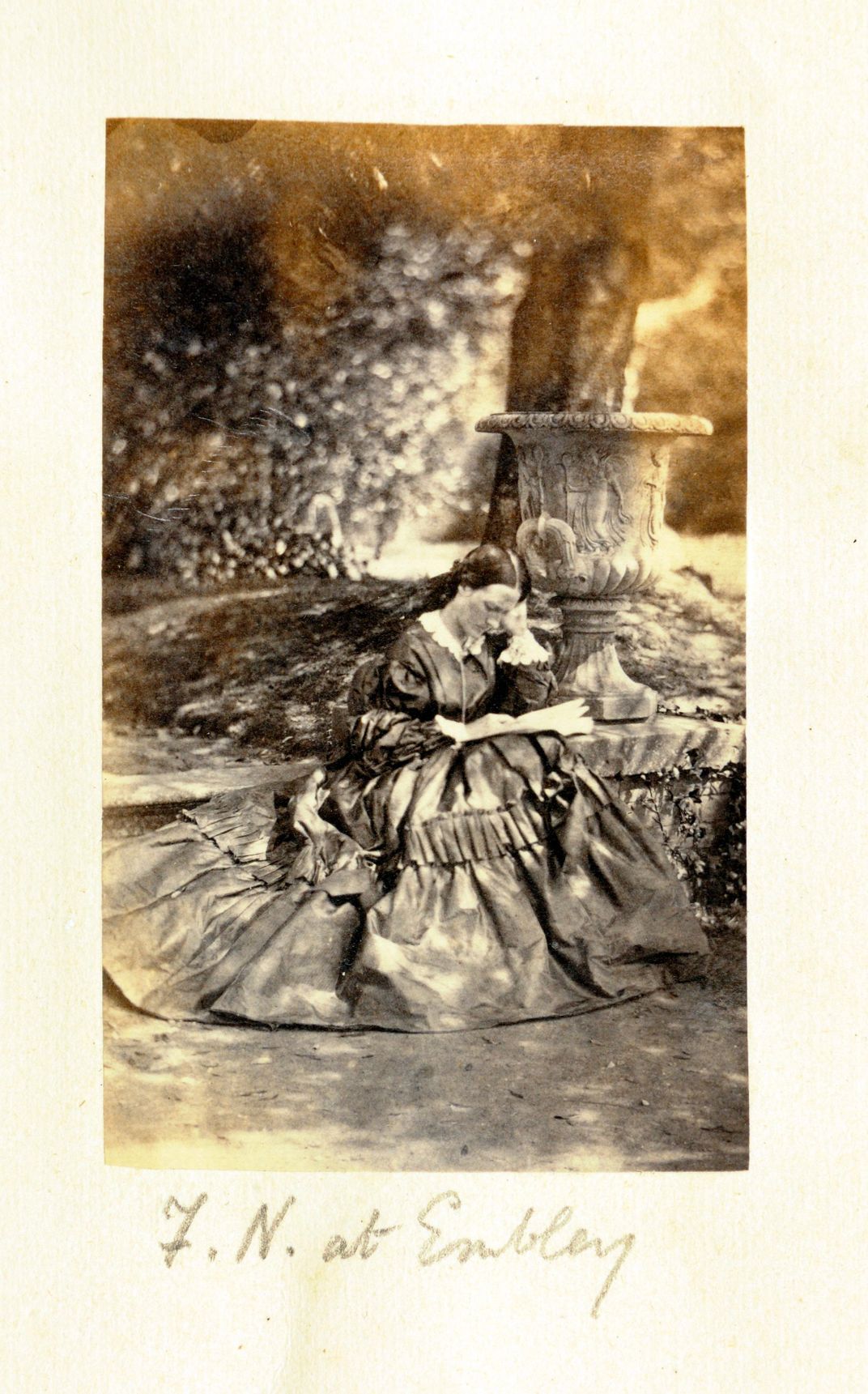Celebrate Florence Nightingale’s 200th Birthday With Exhibit Featuring Her Famed Lamp, Pet Owl
The Florence Nightingale Museum in London seeks to illuminate the “full story” of the pioneering healthcare reformer
/https://tf-cmsv2-smithsonianmag-media.s3.amazonaws.com/filer/a8/df/a8df70fa-2521-4d83-a5ff-c79eec288e12/florence_nightingale_in_bed_at_south_street_in_1906_aged_86_photographed_by_elizabeth_bosanquet.jpg)
In 1854, Florence Nightingale arrived at a military hospital in Scutari, near Constantinople, to tend British soldiers wounded during the Crimean War. Appalled by the conditions—rodents and vermin running rampant, patients lying in their own filth, a woeful lack of basic medical supplies—she quickly set about implementing reforms. Nightingale was a tireless nurse; at night, she would wander the darkened rooms of the hospital, checking on patients by lamplight. Her admirers took to calling her the “Lady with the Lamp.”
The image of Nightingale ministering to the sick, her trusty light in hand, became iconic in her native Great Britain, appearing in paintings and on a £10 note released in 1975. But the lamp she actually carried was different than the spouted devices that often appear in her portraits: In reality, Nightingale relied on a folded Turkish lantern, or fanoos, to illuminate her patients.
The nursing pioneer’s original lantern is among 200 objects set to go on view at the Florence Nightingale Museum in London as part of a new exhibition celebrating the bicentenary of her birth. The show seeks to present Nightingale’s “full story,” David Green, director of the museum, tells Mark Brown of the Guardian. She was not only a nurse, but also a healthcare reformer, statistician and social advocate—this in spite of the fact that she was beset by mental and physical struggles of her own.
Nightingale, says Green, is “known but not known.”

Among the vast array of objects on display are Nightingale’s writing case; her copy of Oliver Twist (Dickens was a friend and admirer); and a family album, started by Nightingale’s aunt, that includes watercolor sketches of the famed healthcare worker. Visitors can also see her beloved pet owl, Athena. During a trip to the Acropolis in Athens, she saw the bird being tormented by a group of boys and rescued it. When Athena died, Nightingale was devastated. She hired a taxidermist to preserve the bird and kept it mounted in her family home.
Nightingale is best remembered for this sense of caring and compassion—but she was also a visionary, and extraordinarily determined. Born in 1820 to an upper-class family, she was not content to lead the domestic life expected of respectable Victorian women. As Joshua Hammer writes for Smithsonian magazine, Nightingale believed it was her destiny to do God’s work, and she decided to train as a nurse.
Paid nursing was, at the time, seen as a lowly job for poor, elderly women. But in spite of her parents’ initial objections, Nightingale set off to study at a nursing school in Germany, where she learned not only to care for the sick, but also about the importance of patient observation and hospital organization.
After fighting broke out in the Crimean Peninsula, Britain’s Minister of War invited Nightingale to supervise the introduction of female nurses to military hospitals in Turkey. She and the 38 nurses under her command arrived at Scutari to find a scene of chaos. More soldiers, according to History.com, were dying of infectious diseases like typhoid and cholera than of battle wounds. To make matters worse, the hospital sat on top of a cesspool that contaminated its water. Nightingale called the facility the “Kingdom of Hell.”
Though they faced resistance from military staff, Nightingale and her nurses set about cleaning the wards and establishing basic protocols for care—like bathing patients, feeding them hearty foods and dressing them in clean clothing. She established a laundry at the facility, and a kitchen where meals could be prepared for soldiers with special dietary needs.
Today, reports Smithsonian, historians and public health experts debate the extent to which Nightingale’s efforts made a difference at Scutari. During her first winter there, more than 4,000 soldiers died, largely from infectious diseases. The mortality rate only dramatically decreased after the arrival of a British sanitary commission, which flushed out sewers and removed a dead horse that was polluting the hospital’s water supply. Still, says Nightingale scholar Lynn McDonald to Smithsonian, the success of the commission only confirmed the nurse’s beliefs about the link between filth and illness.
“That is the foundation of all she does in public health for the rest of her life,” McDonald explains.
Back home after the war, Nightingale was determined to ensure that the medical debacle she had witnessed was not repeated. She collected data on military hospitals in both Constantinople and Great Britain—where conditions were not much better—and confirmed the connection between improved sanitation and falling death rates. She presented her findings in pie-like charts known as “coxcombs,” prompting officials to overhaul military hospitals in Great Britain and finance a sewage system in London. In 1858, Nightingale became the first female fellow of the Royal Statistical Society.
In a cruel twist of irony, the pioneering healthcare advocate was often bedridden. While she was working abroad, Nightingale contracted an infection—possibly brucellosis, which can cause joint, muscle and back pain. She retreated into her London home, which, Brown tells the Guardian, was “bound to have had an effect on her mental health.” A gold watch on display at the new exhibition hints at Nightingale’s sadness; it was a gift from her father, but she gave it away, saying, “I do not use a watch now, for I am not movable.”
In spite of her illness, Nightingale continued gathering data on health care, sending questionnaires to hospitals, writing reports and founding investigative commissions.
“She has little or none of what is called charity or philanthropy,” her sister, Parthenope, once wrote of Nightingale. “She is ambitious—very, and would like ... to regenerate the world.”
“Nightingale in 200 Objects, People & Places” is on view at the Florence Nightingale Museum in London from March 8, 2020, to March 7, 2021.

/https://tf-cmsv2-smithsonianmag-media.s3.amazonaws.com/filer/89/8c/898c04d1-cf2a-41dc-8d0c-b263ce57cb82/athena_florence_nightingales_pet_owl_rescued_by_fn_at_the_acropolis_athens.jpg)
/https://tf-cmsv2-smithsonianmag-media.s3.amazonaws.com/filer/1b/87/1b87226b-9510-47e1-a0ca-35a73f493cbb/florence_nightingale_at_her_london_home_at_south_street_dsc9301.jpg)